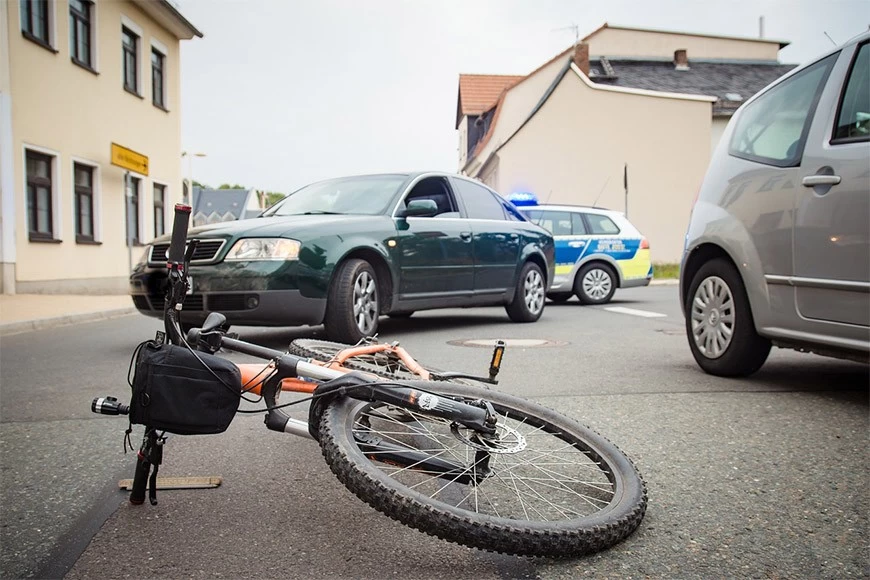Specifications
Model Number : PV-SC-001
Type: Bike parking and storage
Color:Yellow,Black,Green,Red,or Customized.
Style : both indoors and outside
Material : carbon steel
Loading: According to customer need
Size :195*23.2*75cm,200.55*23.2*75cm,or Customized.
Finish: hot-galvanized
Specifications
Model Number : PV-0081-01
Type: Bike parking and storage
Color:silver
Style : both indoors and outside
Material : carbon steel
Loading: According to customer need
Size :Height 1463mm, Depth 1114mm
Finish: hot-galvanized
Model Number : PV-0081-01
Type: Bike parking and storage
Color:Black
Style : both indoors and outside
Material : carbon steel
Loading: 2-10 bikes (According to customer need)
Size :Height 1463mm, Depth 1114mm
Finish: hot-galvanized
Model No.: PV-H1
Size: w605*D400*H330mm
Specification: Round tube:¢16*1.2mm
Finish: Power coated
Net Weight: 1.6 kgs
Packing size:6pcs/ctn
MOQ: 100pcs
Model Number : PV-0024-01
Material : carbon steel/stainless steel
Loading: according customer space size,we can design according the size
Size : W1977*D1130(depend on your parking space)*H2500mm
Finish: Powder coated ,hot-galvanized/electric polish
Packing size :2000*2000*2500mm(40 parking space )
Powder coated ,hot-galvanized/electric polish
Product number:PV-0046-01
Material:carbon steel
Specification:10.2*59*28CM or Customized.
MOQ:100PCS
Port:Shanghai
Trademark:PV
Model Number : PV-0081-01
Type: Outdoor Bike Parking Rack
Style : both indoors and outside
Material : carbon steel
Loading: 2-10 bikes (According to customer need)
Size :170.5*116*148CM
Finish: hot-galvanized
Model Number : PV-0055-01
Type: compact flat pack /slot
Color:black / silver /yellow/optional
Style :Outdoor/indoor
Material : carbon steel/ stainless steel
Capacity : park 6 bikes
Size : L1400*W1054*H840mm
Net weight :38KG
Finish: powder coating / hot galvanized /elctropolishing
Packing size :1490*860*160mm 1pcs/ctn
Product Name: Multi-Capacity Horizontal Two Tier Bike Parking Rack
Material: Carbon Steel
Finish: Powder coated
Post: 80mm * 80mm thickness: 3mm
Steel plate: thickness: 2mm
Dimension: 1325*1890*1830mm
Weight: 370 kg/set
Model: PV-0067-01
Material: stainless steel 304
Pipe: 50 mm* 2.5 mm
Size: 900*700 mm(L*W)
Surface treatment: polishing

In the hustle and bustle of today's fast-paced world, cycling has emerged as a popular mode of transportation and a recreational activity. While cycling brings numerous health and environmental benefits, it also comes with its share of risks, with bicycle accidents being a concern for cyclists and road users alike. In this comprehensive blog, we will delve into the various aspects of bicycle accidents, their causes, and most importantly, effective measures to prevent them.
Cycling, a mode of transportation and recreation celebrated for its health and environmental benefits, is not without its risks. As the popularity of cycling rises worldwide, so does the concern over bicycle accidents.The global scale of bicycle accidents reveals a concerning landscape that demands attention and concerted efforts to improve safety for cyclists worldwide.Cycling, a popular mode of transportation and recreation, faces numerous challenges that contribute to the prevalence of accidents on a global scale. The global prevalence of bicycle accidents is significant, with millions of reported incidents each year. This number encompasses a range of accidents, from minor solo falls to more severe collisions with motor vehicles.
Bicycle accident rates vary significantly across regions. In densely populated urban areas, the risk of accidents may be higher due to increased traffic density and potential conflicts with motor vehicles. However, rural areas may present different challenges, such as winding roads and limited infrastructure.Regions where cycling is a popular mode of transportation or a widespread recreational activity often experience higher accident rates. Countries that promote cycling as a sustainable and healthy alternative may see increased usage but also face challenges in ensuring the safety of cyclists.
2.Common Causes of Bicycle Accidents:
Bicycle accidents can occur due to various factors, often stemming from a combination of human, environmental, and infrastructure-related elements. Understanding the common causes of bicycle accidents is essential for implementing effective preventive measures.
Collisions with Motor Vehicles and Distracted Driving
One of the most significant risks for cyclists is collisions with motor vehicles. These accidents often occur at intersections, driveways, or when motorists fail to notice or yield to cyclists. Factors such as distracted driving, speeding, and impaired driving can exacerbate the risk.Both cyclists and motorists can be affected by distracted driving. Motorists using mobile phones, adjusting in-car entertainment systems, or engaging in other distracting activities may fail to notice cyclists on the road, leading to accidents.
Unsafe Overtaking and Dooring Accidents
Cyclists are vulnerable to accidents when motorists attempt to overtake them unsafely. Close passes, especially at high speeds, can lead to collisions, and the lack of awareness about proper passing distances exacerbates the risk.Parked cars pose a threat to cyclists, particularly in urban areas. Dooring accidents occur when a driver or passenger opens a car door without checking for approaching cyclists, leading to collisions.
Poor Road Conditions and Lack of Bicycle Infrastructure
Uneven road surfaces, potholes, and debris can pose hazards to cyclists. Poorly maintained roads and infrastructure increase the risk of accidents, especially if cyclists are forced to swerve suddenly to avoid obstacles.Inadequate or poorly designed bicycle infrastructure, including the absence of dedicated bike lanes, can contribute to accidents. Cyclists may be forced to share busy roads with motor vehicles, increasing the risk of collisions.
Intersection Conflicts and Inadequate Lighting and Visibility
Intersections are common locations for bicycle accidents. Issues such as failure to yield, misjudgments of the cyclist's speed, and inadequate visibility can lead to collisions between cyclists and motor vehicles.Low visibility, especially during dawn, dusk, or nighttime, increases the risk of accidents. Cyclists without proper lighting, reflective gear, or motorists who fail to see them in low-light conditions contribute to collisions.
Cyclist Behavior and Lack of Education and Awareness
Some accidents can be attributed to the behavior of cyclists, including running red lights, not signaling turns, or riding against traffic. While motorists bear a significant responsibility, cyclists must also adhere to traffic rules for their safety.Insufficient education and awareness about sharing the road safely can contribute to accidents. Both cyclists and motorists may not be fully informed about the rules and precautions necessary for coexisting on the road.
Helmets provide a critical layer of protection for the head, reducing the risk of severe injuries in case of accidents.Head injuries are a significant concern in bicycle accidents. Helmets absorb impact energy and distribute it, minimizing the force transferred to the head and reducing the risk of brain injuries.
In many jurisdictions, wearing a helmet is a legal requirement for cyclists. Adhering to these laws not only avoids legal consequences but also reinforces the importance of safety.Helmets are designed and tested to meet specific safety standards. Ensuring that cyclists wear helmets promotes a safety-conscious mindset and compliance with established safety norms.
Adhering to traffic rules ensures that cyclists follow the same signals and rules as motorists. This predictability facilitates smooth traffic flow and reduces the likelihood of accidents.Proper use of hand signals by cyclists communicates their intentions to motorists, enhancing mutual understanding and preventing misunderstandings on the road.
Building a safer environment for cyclists requires a comprehensive approach that includes the development of proper infrastructure and supportive legislation. Creating cycling-friendly infrastructure and enacting effective laws contribute significantly to the safety of cyclists on the road.By combining well-designed infrastructure with supportive legislation, communities can create an environment that prioritizes the safety and accessibility of cyclists. It is essential for local authorities, urban planners, and policymakers to work collaboratively to implement these measures and foster a culture of safety for all road users.

Education and awareness campaigns play a pivotal role in promoting safe cycling practices, fostering a culture of shared responsibility on the road, and reducing the risk of bicycle accidents. These campaigns aim to inform both cyclists and motorists about best practices, rules, and the importance of mutual respect.
1.Cyclist Education Initiatives and Motorist Awareness Programs
Organize workshops and seminars to educate cyclists on safe riding practices, proper helmet use, and the importance of visibility on the road.Develop online platforms or courses that provide accessible and interactive cyclist education, covering topics such as road rules, signaling, and bike maintenance.Integrate cyclist safety modules into driver education courses to raise awareness among motorists about sharing the road responsibly.Utilize PSAs through various media channels to communicate the importance of looking out for cyclists and understanding their vulnerabilities.
Incorporate bicycle safety education into school curricula, teaching children safe cycling practices from an early age.Organize safety events and competitions in schools to engage students in learning about bicycle safety in a fun and interactive manner.Conduct workshops within local communities to address specific concerns and promote a culture of safety.Organize group rides to encourage community bonding and showcase safe cycling practices.
Distribute informative brochures and pamphlets at key locations, providing quick references on cycling safety tips and rules.Establish a dedicated website and utilize social media platforms to disseminate information, share success stories, and engage with the community.Organize high-visibility events that draw attention to cycling safety, such as safety rallies, parades, or community rides.Partner with local media to amplify visibility campaigns through news articles, interviews, and features.
Collaborate with businesses to promote cycling safety, such as providing safety materials in workplaces or offering incentives for employees who cycle to work.Encourage businesses to sponsor and participate in cycling events that emphasize safety.Government agencies can lead public awareness campaigns through advertisements, billboards, and community engagement programs.Introduce incentives or rewards for cyclists who consistently practice safe riding behaviors.
Share accident statistics and trends with the community to highlight the importance of safe cycling practices and the need for continued awareness efforts.Showcase success stories of communities that have successfully improved cycling safety through education and awareness initiatives.Organize sessions for community feedback, allowing residents to voice concerns, suggest improvements, and actively participate in shaping local cycling safety initiatives.
Mobile apps designed for navigation and safety contribute significantly to enhancing the cycling experience and minimizing risks on the road. These apps offer features ranging from route planning and navigation to real-time safety alerts. Mobile apps that combine navigation and safety features contribute to a safer and more enjoyable cycling experience. By leveraging technology, these apps empower cyclists with information and tools to make informed decisions, navigate efficiently, and stay safe on the road.
Bicycle accidents are a significant concern that demands a multifaceted approach. By addressing the human element, improving infrastructure, enacting supportive legislation, and leveraging technology, we can create a safer environment for cyclists and reduce the incidence of bicycle accidents. Ultimately, fostering a culture of shared responsibility on the road is key to ensuring that cyclists can enjoy their rides safely while coexisting with other road users.